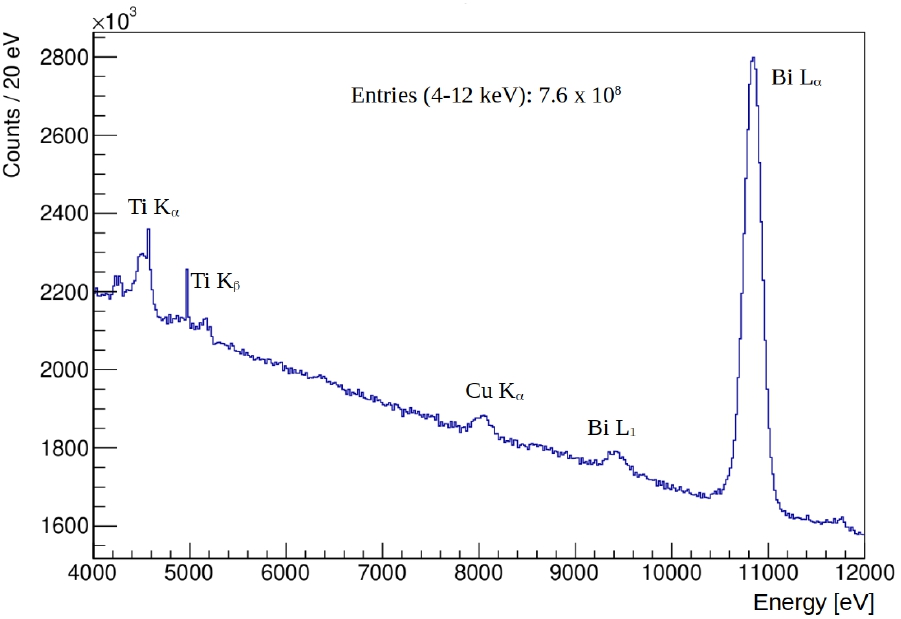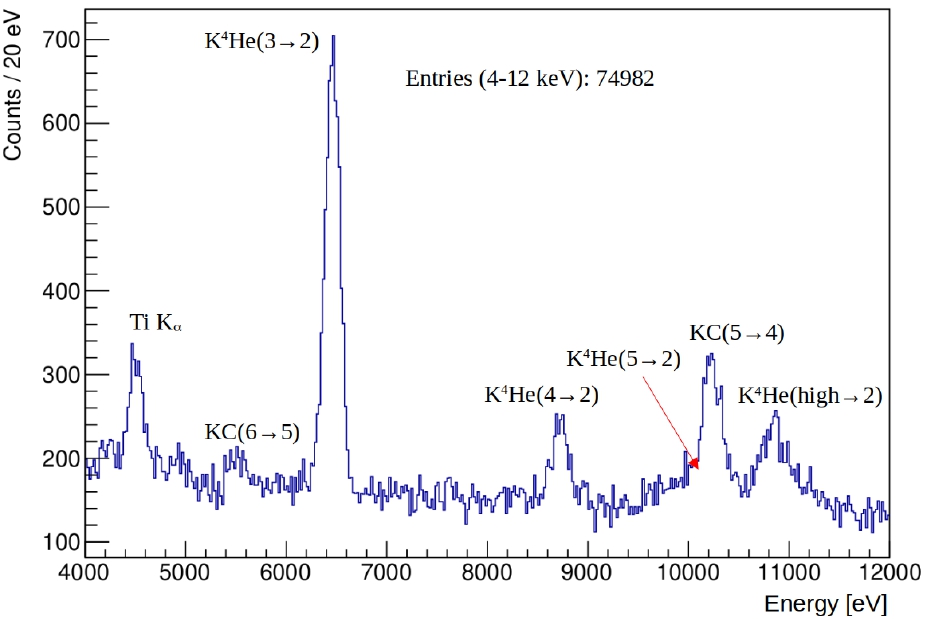The kaonic helium 4 measurement with SIDDHARTA-2
In the second half of 2021 the full SIDDHARTA-2 setup was installed on the Interaction Region of the DAΦNE e+e– collider, in Frascati [1]. The increased number of SDDs, as well as the different conditions of the machine background resulting from the optimization of the instantaneous luminosity, suggested performing a second test with helium before filling the target cell with the deuterium. This was indeed necessary to crosscheck the performances of the experimental apparatus in its full version, with a particular focus on the background rejection capabilities of the trigger system. The choice of 4He was dictated by the high yield of the K4He(3d → 2p) transition allowing for a very fast tuning. The K4He measurement was already performed in 2021 by the SIDDHARTINO experiment, a reduced version of the SIDDHARTA-2 apparatus, with 1/6 of the x-ray Silicon Drift Detectors (SDDs) [2, 3]. Results can be found in the dedicated page link. The data have been collected in the period 04-26/05/2022 and correspond to 28 pb−1 of integrated luminosity. The SDDs were cooled down to −145 ◦C, and the density of the target corresponded to about 1.4% times the liquid helium one. The SDDs’ calibration was performed with the method described in this page.
1. The K4He(3d → 2p) transition measurement.
The overall spectrum acquired by the SIDDHARTA-2 apparatus without selection cuts is shown in the figure below.

This spectrum is affected by two kind of backgrouds: the first produced by the interactions of the kaons with the setup materials, decays and nuclear absorption (synchronous background), the second by the electromagnetic showers due to the particles lost by the beams and crossing the setup (asynchronous background). Synchronous and asynchronous backgrounds are suppressed using the Kaon Trigger (KT) and the VETO systems installed on the SIDDHARTA-2 apparatus. The background rejection factor estimated by the data analysis is 3.1 x 10-5. More details can be found in [2]. The final spectrum obtained after background reduction procedure is shown below.

References
-
-
[1]. F. Napolitano et al., Kaonic atoms at the DAΦNE collider with the SIDDHARTA-2 experiment, Phys. Scr. 97, 084006 (2022).
[2]. D. L. Sirghi et al., A new kaonic helium measurement in gas by SIDDHARTINO at the DAΦNE collider, J. Phys. G: Nucl. Part. Phys. 49, 055106 (2022).
-
-
[3]. D. L. Sirghi et al. , A New measurements of kaonic helium-4 L-series X-rays yields in gas with the SIDDHARTINO setup, Nucl. Phys. A 1029, 122567 (2023).
